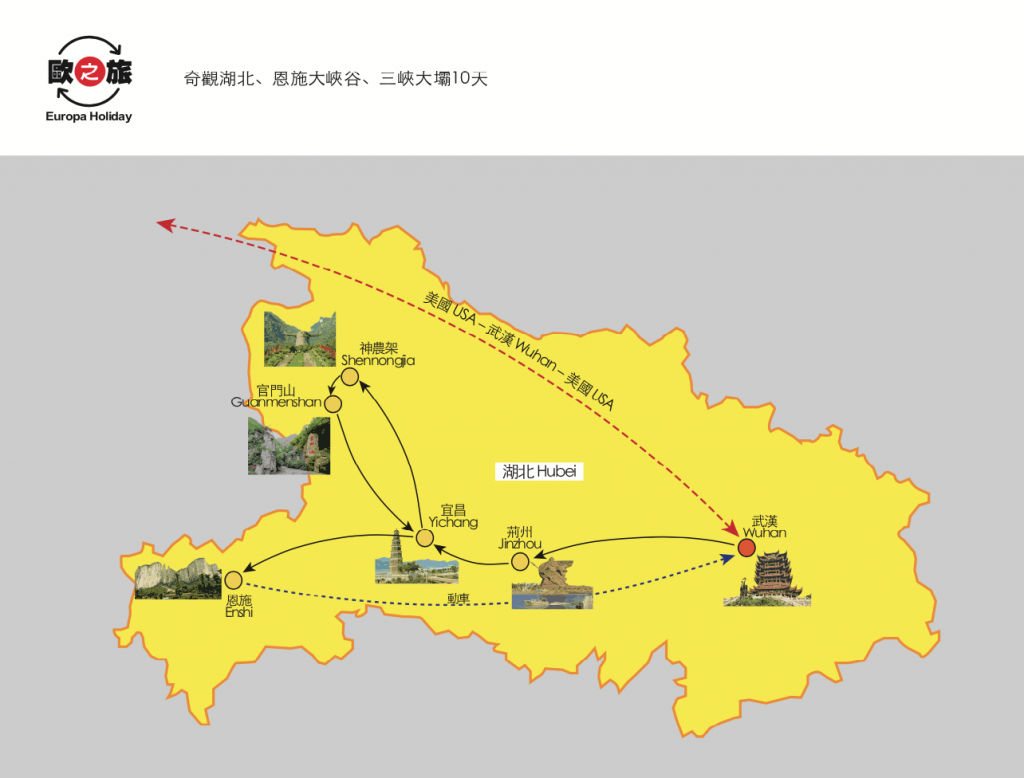Hubei、Enshi Canyon、Three Gorges Dam 10 Day Tour
Summer 2019

* Qingchuan Pavilion: Adjacent to Hanshui River in the north and Dongjiang River in the east. It is the only place in the Wuhan area that stands on the edge of the river and is known as the “first building in Chutian”.
* Guiyuan Temple: A national key temple of Buddhism in the Han area.
* The history of Jingzhou ancient city can be traced back to the Three Kingdoms era. When Guan Yu guarded Jingzhou, Tucheng was built.
* Magnificent Waterway: The famous ” waterway ” is like a dragon, quietly ” standing “in the blue waters of the reservoir, the road along the mountain leaves swaying in the wind, like a beautiful picture .
* Shennongjia: In the northwestern part of Hubei Province, there is a place where mountains and rivers are staggered and peaks and mountains are everywhere.
* Three Gorges Dam: The largest water conservancy project in the world and the largest hydropower station in the world today. Visitors can enter the Three Gorges Dam tourist area. The dam tourist area is currently open to visitors with three attractions: Tanziling, 185 platform (viewing spots) and interception memorial park.
* Daughter City: The world’s first daughter city, located in Qiliping, Enshi City, Hubei Province, is a gathering place for Tujia culture and a city entertainment consumption center and tourist distribution center in Wuling.
* Enshi Grand Canyon: Rich landscape level, similar to Grand Canyon, it covers an area of 300 square kilometers.
* East Lake Scenic Area: Donghu is named after the eastern part of Wuchang, Wuhan, Hubei Province, China. As one of the vast lakes in the city, the water area is 33 square kilometers, six times that of Hangzhou West Lake. * Yunlong Landscape Area: At the foot of the Enshi Grand Canyon, the length is nearly 20 kilometers, and the deepest point is nearly 100 meters.
* Chu River and Han Street: Currently the longest commercial pedestrian street of the city in the world.
* Yellow Crane Tower . It was built in the Three Kingdoms period and was repeatedly destroyed. The Yellow Crane Tower was built in 1985. The majestic shape, simple and elegant, it is the landmark building of Wuhan.
* No shopping, no options, no pressure!
* Provide headset service for 15 and more guests per group for better sightseeing experience
★Entrance Fee and Transportation Included
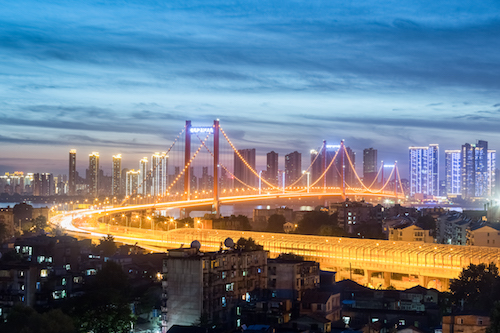
Take the flight to Wuhan today!
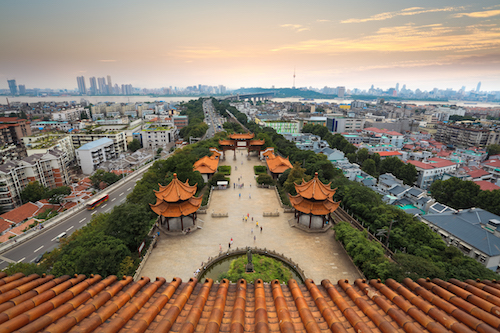
[Wuhan City] is the largest city in Central China, and is one of the seven central cities in the country, a large and medium-sized city in the middle and lower reaches of the Yangtze River. The Yangtze River, the third largest river in the world, and Hanshui, the longest tributary of the world, traverse the urban area, dividing Wuhan into three, forming a pattern of three towns in Wuchang, Hankou and Hanyang. The poet Li Bai of the Tang Dynasty wrote “Yellow Crane Tower” Blowing the jade flute, Jiangcheng fell plum blossoms in May, so Wuhan has been called “Jiangcheng” since ancient times.
Dinner: Chinese Cuisine
Hotel: Wuhan Narada Grand Hotel (5*)
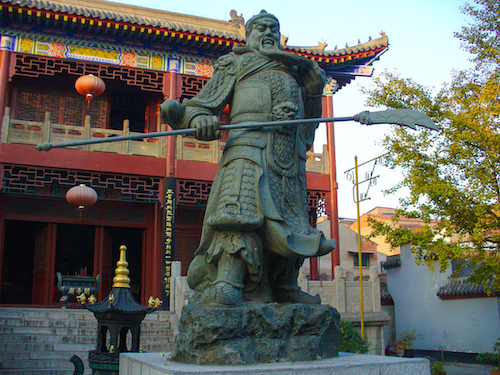
[Qingchuan Pavilion] was built in the Jiajing Period (AD 1547-1549) to commemorate the water control of Dagu. The name of the building was taken from the Qing Dynasty Hanyang Tree in the Tang Dynasty poet Cui Yushi, with Huanghelou, Yueyanglou and Zhongxuan. The building is called the four famous buildings of Chutian, and the Qingchuan Building is also known as the Chu Resort and the first floor of Chu State Qingchuan. Qingchuan Tower was burned down during the Revolution of 1911, and the existing building was rebuilt in 1983.
★ [Guiyuan Temple] is a famous Buddhist Cao Dongzong monastery in Wuhan. The four major Buddhist temples in Wuhan are: Guiyuan Temple, Baotong Temple, Lianxi Temple and Zhengjue Temple. The ancestral temple of Guiyuan Temple is Baiguang, the two main brothers of the main peak, and the ancestral home of Zhejiang. They went to the Hanyang Xingguo Temple to study the Tibetan scriptures, and at the same time practice medicine and do well for three years. Hanyang Fushang Sun Yaoguang, Dai Tiancheng and others were deeply touched, so the folks paid money to build the Guiyuan Temple. The word “guiyuan” comes from the Buddhist scriptures “Sui Yan Jing”: “There is no way to return to the Yuan Dynasty. It means that there are many doors.” It means that the law is one, and it is convenient for people to have a lot of doorways. “Zen” is the meaning of “thinking”, “contemplation”, “abandoning evil”, and Zen is one of the factions that combines Buddhist Mahayana and Confucianism.
[Jingzhou] named in Jingshan in the territory. One of the Kyushu records recorded in ancient Chinese books, and as the actual administrative division, began in the period of Emperor Wu of the Han Dynasty. Two lakes located in the hinterland of the middle reaches of the Yangtze River Plain, 1895 “Treaty of Shimonoseki,” Opening, Shashi as one of five treaty ports, but also one of China’s most inland trading ports.
[Guan Gong Yi Yuan] is located in the southeast side of Jingzhou Ancient City. The northeast is adjacent to the beautiful moat. With the theme of “Yi”, it vividly displays the life of Guan Gong “Yi Bo Yun Tian” in various ways. The world’s largest Guan Gong in the park: the world’s largest volume Guan Gong bronze statue, weighing about 1200 tons, standing on the bow, holding a 70-meter knife, waves, waves.
[Jingzhou Ancient City (outside)] Also known as Gangneung City, it is one of the famous historical and cultural cities in China. The ancient city wall of Jingzhou was built in the Spring and Autumn Period and the Warring States Period. It was once the official ship dock of the Chu State and the Gong Palace. Later it became the governor of Jiangling County and the original city profile appeared. After more than 350 years of wind and rain, most of the existing ancient city walls were built in the late Ming and early Qing dynasties. It is now a majestic brick city that stands in front of people and was built for the Ming and Qing Dynasties. The brick city is tall, straight, solid and sturdy. It is the best preserved ancient city in the Chinese city.
[Yichang] Yichang is located in the western part of Hubei Province. It is located in the middle and upper reaches of the Yangtze River. It is the intersection of the three provinces and the provinces of Hubei, Hunan and Hunan. It is a battleground for the dynasties of the dynasties. It has a long history and a splendid culture with a history of more than 2,400 years. Yichang was called Yiling in ancient times, and the east exit of the Three Gorges of the Yangtze River. It is the location of the Gezhouba Hydropower Station and the Three Gorges Hydropower Station on the Yangtze River and the upper and middle reaches of the Yangtze River. Yichang is known as the world’s hydropower capital, the heart of China’s power, and the birthplace of Bachu culture.
Breakfast: Hotel Buffet Lunch:Chinese Cuisine Dinner: Yangtze River Fish Cuisine
Hotel: Crowne Plaza Yichang Hotel (5*)
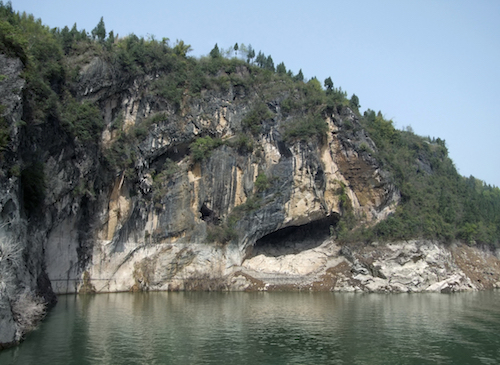
[Water highway] An absolutely beautiful water highway; to avoid jungle deforestation, protecting the environment, the whole kilometers were built in the canyon streams like a jade belt, it is like a dragon, and it is on the Xiangxi River. This road is more than ten kilometers long. From the road of Chengfu Town, Xingfu County to Zhaojun Town, there is also a Chinese-style road name: Guzhao Highway, which is also the first water eco-friendly road in China.
★ [Shennongjia] is located in the northwestern part of Hubei Province. It is said that the ancestor of the Chinese ancestor Yan Di Shennong took the medicine and took the name of the herb. July 17, 2016, Shennongjia officially included in the World Natural Heritage List, become China’s first 50 World Heritage, has become China’s first while achieving UNESCO World Network of Biosphere Reserves, World Geoparks Network, World Heritage three production protection system with the entry of protected areas, geological heritage and heritage places. World Heritage range including Shennong top and Laojunshan area, this region is one of the richest biodiversity in China three regions, not only provides a habitat for many rare animals and plants, as well as botany, zoology and ecology Research provides extremely valuable resources and examples. The Dajiuhu Wetland was approved for inclusion in the International Importance of Wetlands and is one of the parks of the Shennongjia World Geopark in China.
[Shennong Altar] is the southern gate of Shennongjia Tourism, which is slowly flowing southward. The entire scenic area is surrounded by green hills, beautiful and quiet. The landscape is divided into five parts: the main ritual area, the ancient botanical garden, the thousand-year-old cedar, the butterfly specimen museum, and the chime concert hall. The main building is the giant statue of Shennong giant ox, which is 21 meters high and 35 meters wide. The statue stands between the green mountains, with the earth as the body, and the eyes are slightly closed, which seems to be thinking about the mysteries of the universe. In the worship area, at the foot stepped on behalf of heaven and earth is circular and square patterns, on behalf of the square pattern, colored stones were said in the Five Elements of metal, wood, water, fire and earth.
[Tiansheng Bridge] is the crystallization of Shennongjia’s maritime change in the sea for hundreds of millions of years. It is also a typical representative of the karst landform of Shennongjia. Tianshengqiao, as its name suggests, naturally generated bridge. For hundreds of millions of years, the springs have been rushing to erosion, and a stone cave has been washed out between the cliffs to form a natural bridge hole. Tianshengqiao is a masterpiece of the Creator and a treasure that God gave to the descendants of Emperor Shennong. She integrates bridges, waterfalls, lakes, mountains, flowers, and trees into one, like a fairyland on earth, a paradise. Shennongjia Tiansheng Bridge is a natural ecological zone that integrates Qidong, Qiqiao and Qi Waterfall into an adventure.
Breakfast : Hotel Buffet Lunch: Chinese Cuisine Dinner: Chinese Cuisine
Hotel: Muscat Arcadia Forest Hotel (Best in the area)
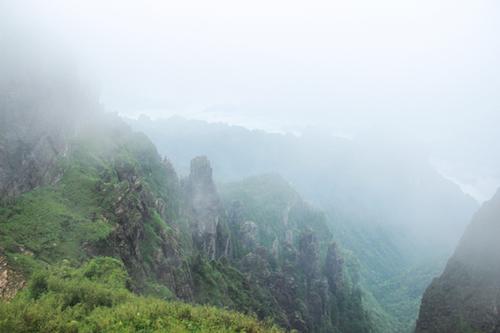
★ [Shennongjia Nature Reserve] is the only well-preserved Chinese inland oasis in the world and the only piece of green treasure latitudes. It has the only intact subtropical forest ecosystem in the mid-latitudes of the world today. It is the most characteristic monopolistic world-class tourism resource. The flora and fauna are rich and colorful, ancient, unique and rare.
★ [Banbiyan] This area is where savages often appear. In the bamboo forest, there are traces of hair and feces left by wild savages. There is a seat twisted with arrow bamboo on the side of the hill. It is lying on the top and has a comfortable and open view. According to many verifications, it is not manpower, and the guess is left for the savage. Call it: wild man’s nest.
★ [Golden Monkey Ridge] is a well-preserved place in the virgin forest. Here, the ancient trees are towering, the waterfalls are flying, and the springs are clear.
★ [Shennong Valley] Shennong Valley is located in the south-south air passage of Shennongjia, and the weather changes rapidly. The mouth of the valley is deep, and the stone forest is clustered. Like a column like a bamboo shoot, the cloud is unpredictable, and it is amazing. After thousands of years of weathering and erosion, it became a magnificent spectacle in your eyes.
★ [Xiaolongtan golden monkey base] is the world’s only new open wild golden monkey reliable base; guests and golden monkey can interacte with each other.
★ [Guanmenshan (Giant Panda Pavilion) ] The Shennongjia Giant Panda Pavilion is located in Hongfeng Park, the Rare Plant Protection Park of Guanmen Mountain Scenic Area. It makes full use of the existing terrain for layout. The total area of the project area is 7133 square meters, and 4 giant pandas are planned to be raised. The overall architectural form is consistent with the style of the Shennongjia Museum near the Giant Panda Pavilion. It adopts the form of a sloping roof and uses natural materials to integrate the whole building into the external environment.
Breakfast : Hotel Buffet Lunch: Chinese Cuisine Dinner: Chinese Cuisine
Hotel: Crowne Plaza Yichang Hotel (5*)
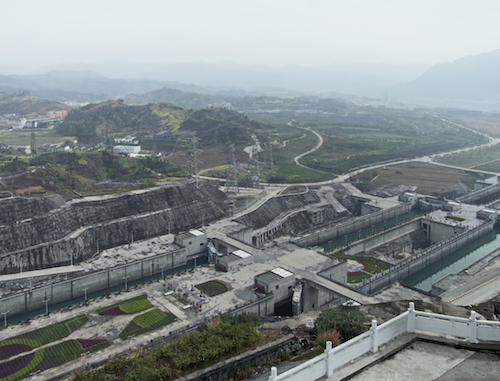
★ [Three Gorges Dam (including battery car) ] The main project of the dam is the largest project of Chinese dynasties. The dam started construction in 1994, and the third phase of the project was completed in 2009. It is the most difficult water conservancy project in the world. There are galleries within the area of the Three Gorges, tanzhiling parks, 185 parks, park near the dam and the closure of five Memorial Park, learn about engineering and hydrologic culture dam, have the opportunity to also see the operation of the sluice, feel the vast river Full of explosive power.
[Enshi] Located at the mysterious 30 degrees north latitude, the beautiful 800-mile Qingjiang Gallery puts this green land on the enchanting score. The well-developed karst landscape of hundreds of millions of years adds a lot of unique style. With 70% forest coverage, she has the title of “Clean Energy Cemetery” and “Green Food Kingdom”, and enjoys the reputation of “Western China Sea”, “Huazhong Medicine Library” and “World Selenium Capital”.
★ [Tujia Daughter City] The world’s first daughter city! “Tujia daughters City” is located in downtown Qiliping Enshi in Hubei Province, as the country’s eighth man-made town, city and Tujia daughter carefully plan the overall architectural style, antique floor perfectly embodies the soil Family folk customs. The street is built on the mountain, set along the water, and paved with gray breccia. Daughter Street is the representative of the daughter city, located in the core of the ancient city, is the most prosperous street in the city, and is also one of the most prosperous neighborhoods in Enshi.
Breakfast : Hotel Buffet Lunch: Chinese Cuisine Dinner: Local Cuisine
Hotel: Ruiheng International Hotel
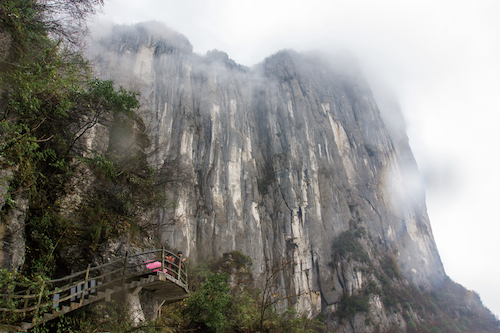
★ [Enshi Grand Canyon (green car + cable car + escalator)] Within the territory of Enshi City, Hubei Province, considered by experts with the United States Grand Canyon equally matched, the Grand Canyon is Qingjiang period, a total length of canyon 108 kilometers, covering an area of 300 square kilometers. In addition to the Grand Canyon, the biggest landscape features the typical and rich karst landforms on both sides: there are sinkhole, ground seams, natural bridges, caves (more than 200), layered peaks, and nearly vertical The big cliff of the Grand Canyon.
★ [Yunlong river] in Enshi Tujia and Miao Autonomous Prefecture of Enshi Grand Canyon foot, formed at least 50 million years ago, from the top to the bottom of the seam formation is mainly formed in the seam 2.1-2.9 billion years. The stacked and Triassic limestones are the only seams in the world with different geological ages on both sides. It has a total length of 3.6 kilometers, an average depth of 75 meters, and an average width of 15 meters. The two banks are steep, the waterfalls are mad, the bottom of the seams are flowing, the upper reaches of the Tianshui River, and the lower reaches of the Qingjiang River.
Breakfast : Hotel Buffet Lunch: Chinese Cuisine Dinner: Chinese Cuisine
Hotel: Ruiheng International Hotel
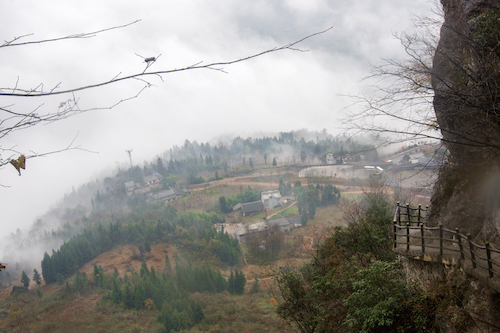
[Hubei Provincial Museum] There are more than 230,000 pieces of existing collections and nearly 1,000 pieces of national first-class cultural relics. Prehistoric pottery represented by Qujialing culture and Shijiahe culture, bronzes represented by Panlongcheng and Zenghouyi’s tomb, and a large number of lacquerware unearthed from the tomb of the Han tomb in the middle of the Spring and Autumn Period. Among them, the Pixian people’s skull fossils, Yue Wang Goujian sword, Zeng Houyi bell and the Yuan Dynasty blue and white four Aitumei bottles are known as the four treasures of the Hubei Provincial Museum.
[Donghu Tingtao Scenic Area] The scenic spot has a group of scenic spots to commemorate the patriotic poet Qu Yuan, as well as a newly built beach bath. It is a good place for people to enjoy the summer.
[Chuhe Han Street] Chu River is a 2.2-kilometer river connecting East Lake and Shahu. Han Street is a 1.5-kilometre pedestrian street on the south bank of the Chu River. The architectural style of Han Street is unique and mixed with the different styles of ancient and modern. Most of the buildings restored the style of the Republic of China, including red and gray bricks, finely-cut foreheads, black gates, brass door handles, slate tiles, Shikumen, and old wooden sashes. And other elements.
Breakfast : Hotel Buffet Lunch: Chinese Cuisine Dinner: Chinese
Hotel: Wuhan Narada Grand Hotel (5*)
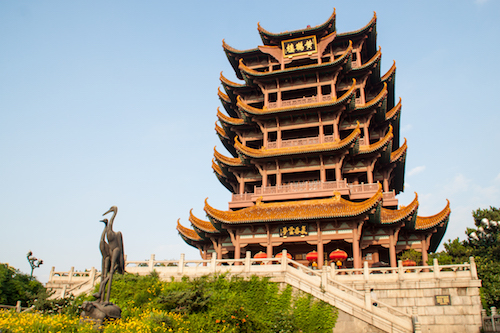
★ [Yellow Crane Tower (including battery car) ] One of the three famous buildings in Jiangnan, together with Yueyang Tower and Tengwang Pavilion, is also known as the three famous buildings in Jiangnan. The red glazed columns are red glazed tiles. The golden glory is a must-see for visitors to Wuhan. Yellow Crane Tower is renowned attractions within and beyond the sea, she was on the verge of the Yangtze River, ranked first in the Snake Hill, CASTLE overlooking monastery is surrounded by thousands of miles. The majestic building is the first of the three famous buildings in Jiangnan. Since ancient times, it has enjoyed the reputation of “the world’s most beautiful scenery” and “the first floor of the world.”
[Xinhai Revolution Memorial Hall] The A two-storey red building, so it is commonly known as the “red building”. Revolution Museum in Wuhan is relying on thematic museum to commemorate the Revolution as the theme of national key cultural relics protection units Republic of China Hubei Military Government military government established site, located at the northern end of the square reading racecourse Wuchang District, west of the Yellow Crane Tower, north Snake Mountain, south of Shouyi Square. Therefore, Wuchang is known as the “Street of the First Sect” and the Red House is regarded as the “gate of the Republic of China”.
Breakfast : Hotel Buffet Lunch: Chinese Cuisine Dinner: Hubei Cuisine
Hotel: Wuhan Narada Grand Hotel (5*)
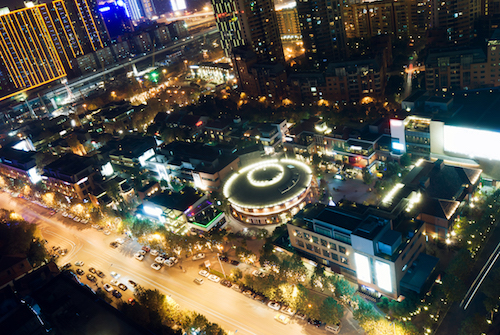
This is the end of all the trips, will soon return to your warm and sweet home.
Breakfast: Breakfast Box or Hotel Buffet depending on the time of departure
*Min. 10 people
Tour Fare include: 5 star Hotel or special lodge, Breakfast, Lunch, Dinner, Local Transportation, Entrance Fee
Tour Fare excludes: AIRFARE, Personal expense, Any expense not included in our itinerary, Tips: USD $10 per day, Visa Fee, Travel Insurance(If full payment paid 60 days prior to departure date, we offer medical travel insurance for US residents only)
** If you purchase air ticket on your own, your arrival time to the first destination and your departure time from last destination to U.S. must be the same as our group. If not the same, you must arrange your own transportation to meet group and to aiport on the last day **
Notes:
*Tour fare is per person in double occupancy
*Child Fee: 2-11 years old share bed with parents, otherwise will be count as adult fare
* Single supplement is for one person occupying one single room with one bed
*Tour fare, air ticket, airport tax and fuel surcharge are subject to change base on fluctuation in price, please contact us for more info

